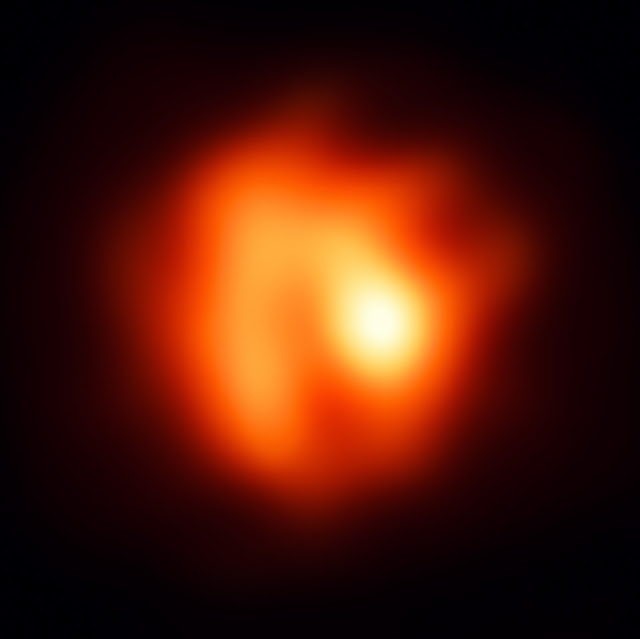This ghostly image shows a distant, pulsating red giant star known as R Sculptoris. Located 1,200 light-years away in the Sculptor constellation, R Sculptoris is something known as a carbon-rich asymptotic giant branch (AGB) star, meaning it is nearing the end of its life. At this stage, low- and intermediate-mass stars cool, create extended atmospheres, and lose much of their mass; They are on their way to becoming spectacular planetary nebulae.
While the basics of this mass loss process are understood, astronomers are still investigating how it begins near the star's surface. The amount of mass lost by a star actually has enormous implications for its stellar evolution, altering its future and giving rise to different types of planetary nebulae. When AGB stars end their lives as planetary nebulae, they produce a wide range of elements, including 50% elements heavier than iron, which are then released into the Universe and used to form new stars, planets, moons and finally, the building blocks. of life.
A particularly intriguing feature of R Sculptoris is its dominant bright spot, which appears to be two to three times brighter than the other regions. The astronomers who captured this wonderful image, using the interferometer on ESO's Very Large Telescope (VLTI), have concluded that R Sculptoris is surrounded by giant “clumps” of stellar dust that are breaking off from the falling star. . This bright spot is, in fact, a region around the star with little or no dust, allowing us to look deeper into the stellar surface.
This image captures an extremely small section of the sky: approximately 20×20 milliarcseconds. For comparison, Jupiter has an angular size of about 40 arcseconds.
Image credit: ESO
Explanation from: https://www.eso.org/public/images/potw1807a/
